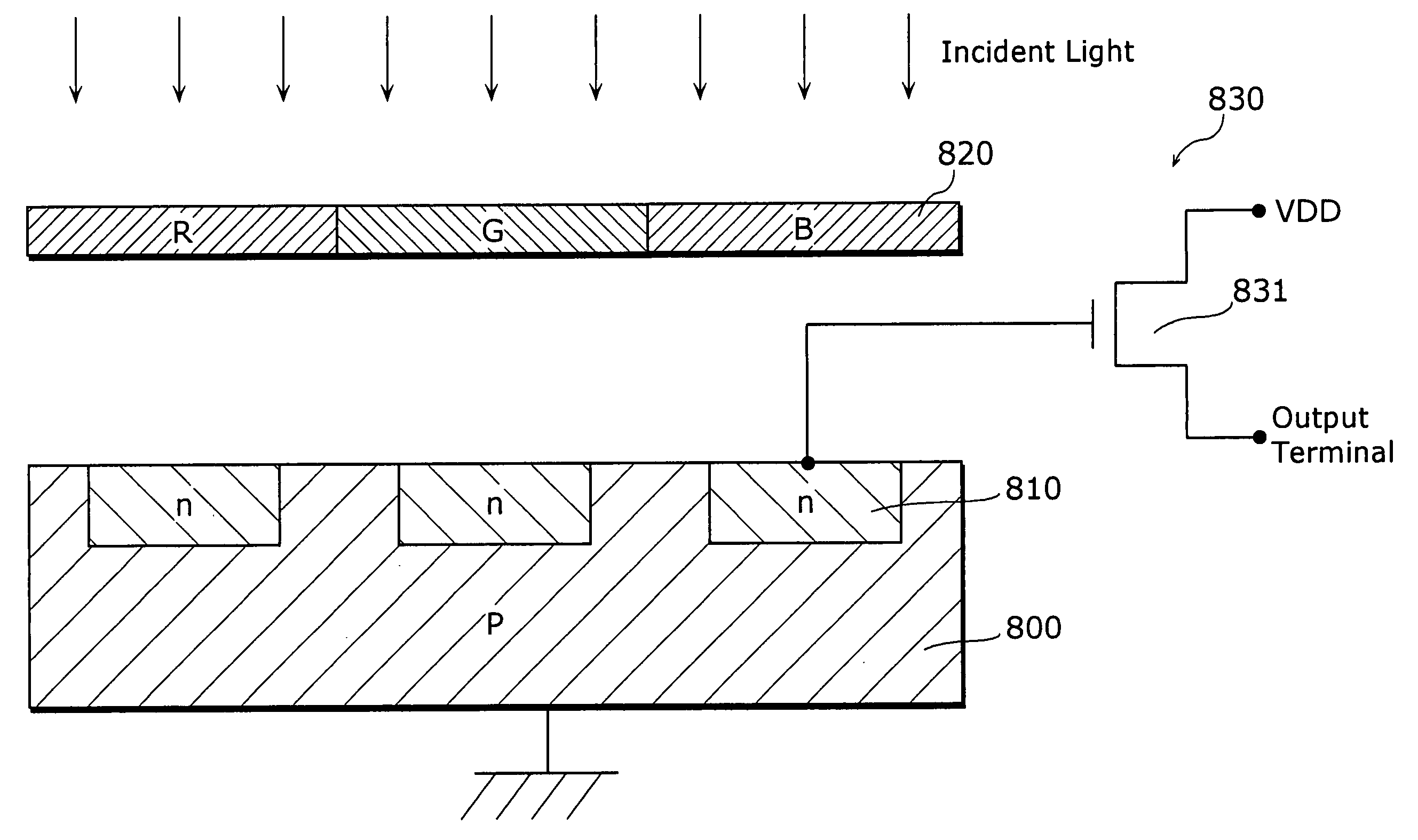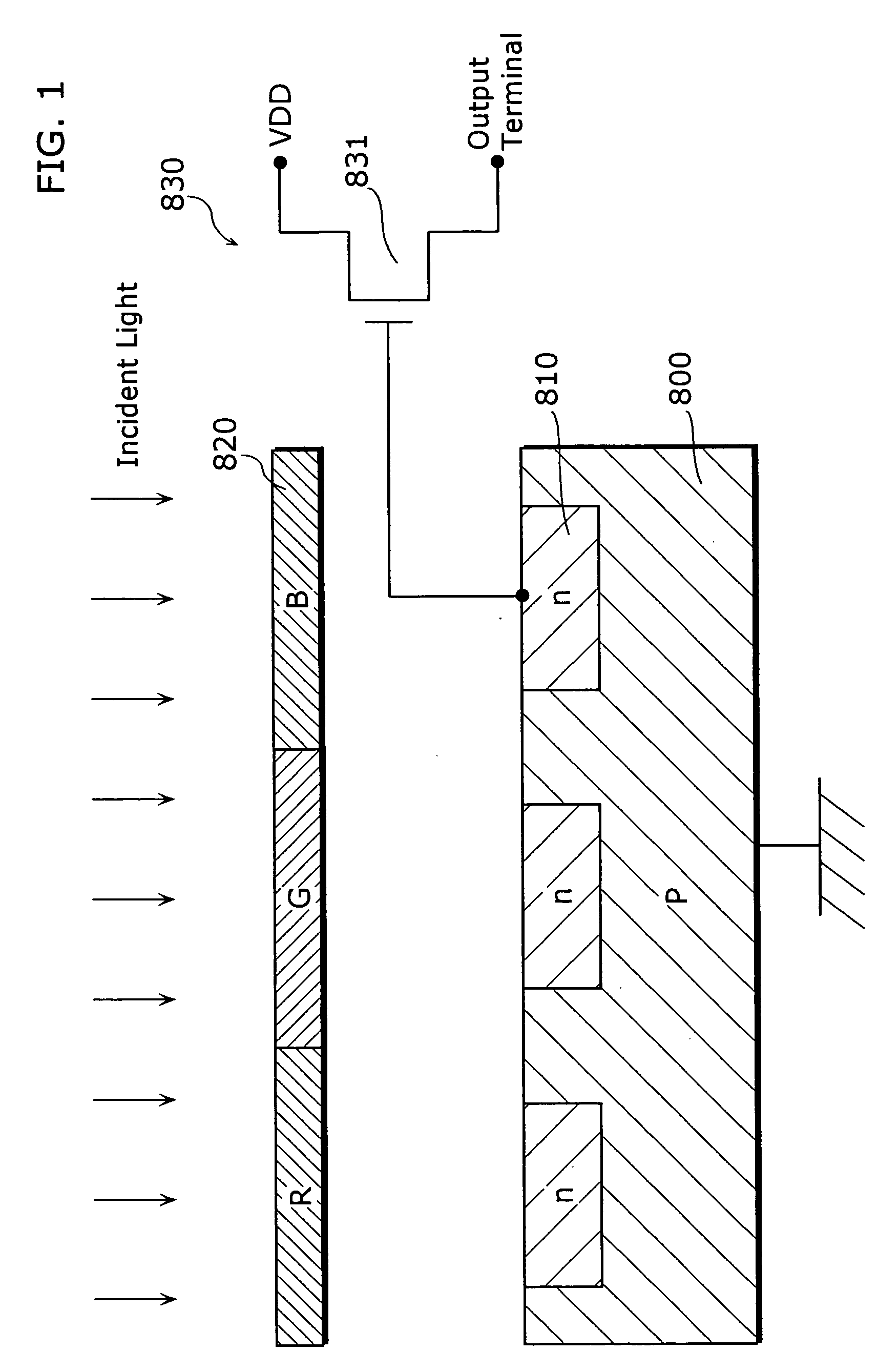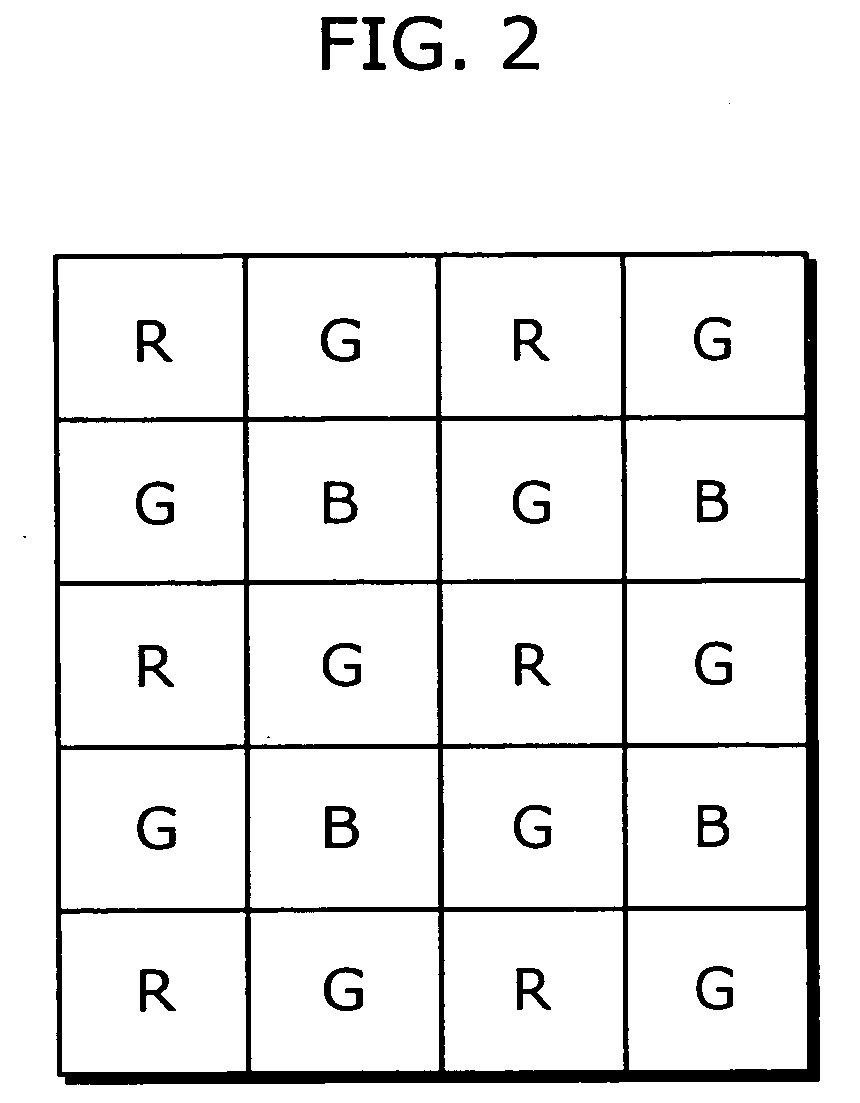Photo-detecting device
a technology of photodetecting and image sensor, which is applied in the direction of radiation control devices, semiconductor devices, picture signal generators, etc., can solve the problems of low efficiency of use of available light, reducing the color reproducibility of images, and light not being passed by the color filter, etc., to achieve higher quality imaging, reduce weight, and improve image quality
- Summary
- Abstract
- Description
- Claims
- Application Information
AI Technical Summary
Benefits of technology
Problems solved by technology
Method used
Image
Examples
Embodiment Construction
[0043] The following describes a MOS solid-state image sensor according to an embodiment of the present invention with reference to the drawings.
[0044]FIG. 3 is a cross-sectional view showing structures of a photo-detecting device in the MOS solid-state image sensor structures and its periphery, according to the present embodiment.
[0045] Referring now to FIG. 3, the solid-state image sensor according to the present embodiment is comprised of: a photo-detecting device 100; and output amplifiers 110 that have each MOS transistors, that are connected with the photo-detecting device 100, and that convert signal charges into voltage, and amplify and output the voltage.
[0046] The photo-detecting device 100 that includes bonding silicon-on-insulator (SOI) substrates is formed by sequentially stacking: a first silicon substrate 120; a first SOI substrate 130 in which a second silicon substrate 132 is formed on a first SOI insulation layer 131; and a second SOI substrate 140 in which a th...
PUM
 Login to View More
Login to View More Abstract
Description
Claims
Application Information
 Login to View More
Login to View More - R&D
- Intellectual Property
- Life Sciences
- Materials
- Tech Scout
- Unparalleled Data Quality
- Higher Quality Content
- 60% Fewer Hallucinations
Browse by: Latest US Patents, China's latest patents, Technical Efficacy Thesaurus, Application Domain, Technology Topic, Popular Technical Reports.
© 2025 PatSnap. All rights reserved.Legal|Privacy policy|Modern Slavery Act Transparency Statement|Sitemap|About US| Contact US: help@patsnap.com



